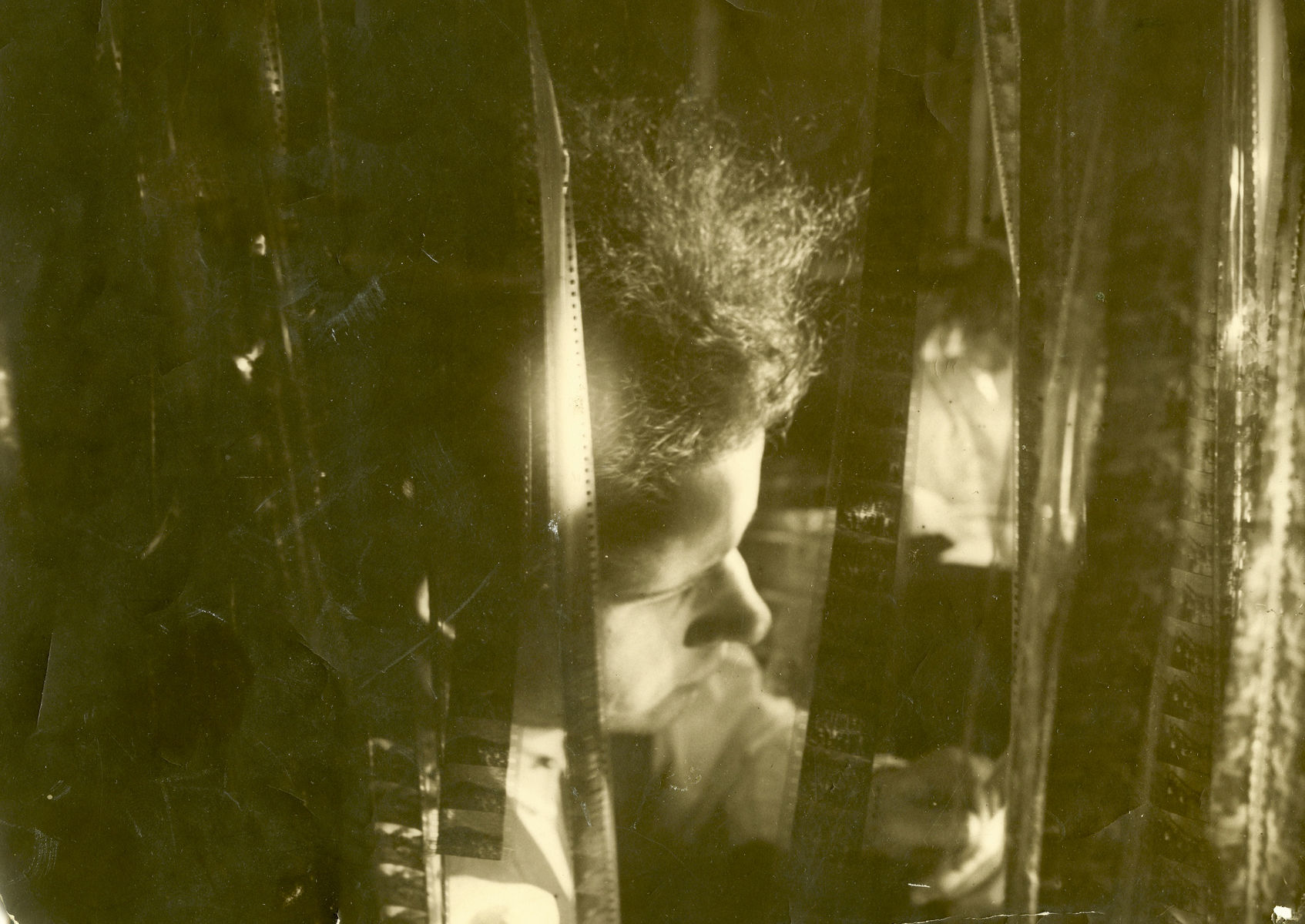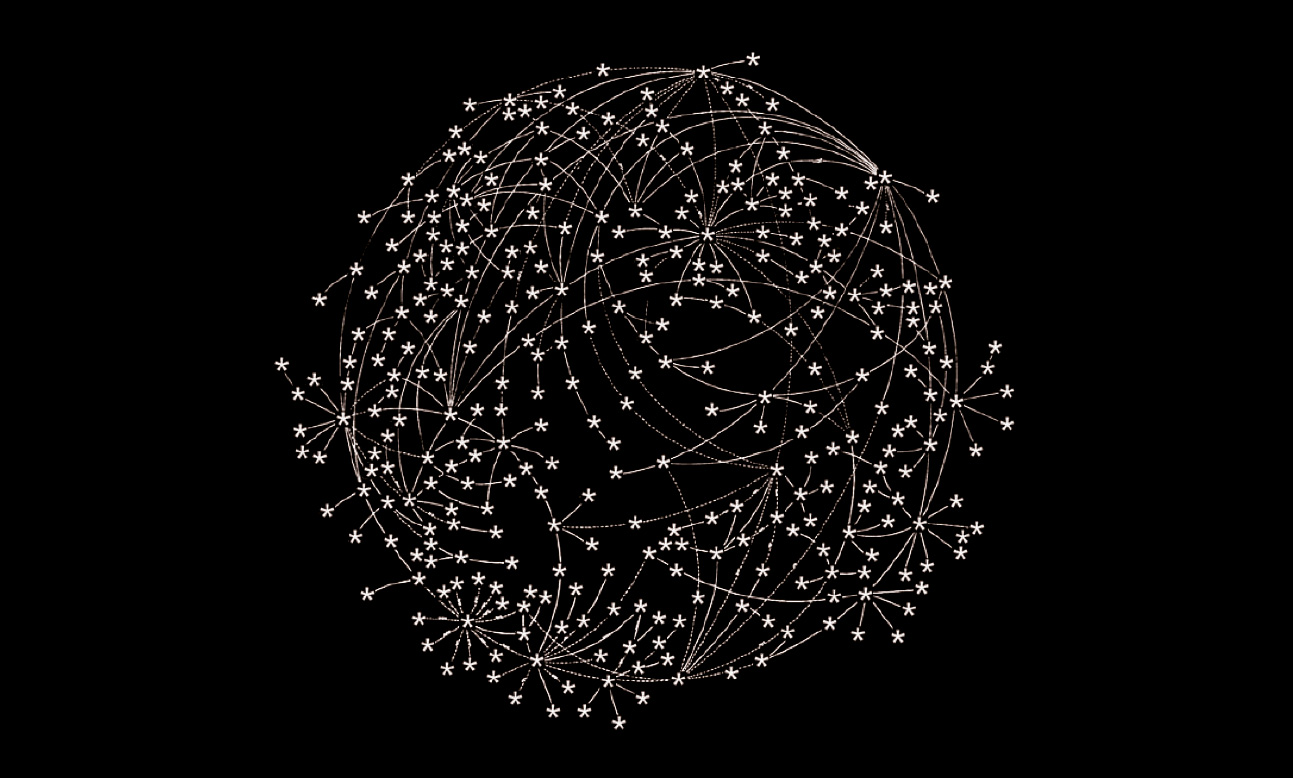
How can digital technologies revive a place that no longer exists?
How can we make this space accessible in a way that appeals to the emotions?
And how can we connect this emotional experience to an intellectual journey?
The arts and science research project Collisions explores new ways of accessing the intellectual and artistic universe of Sergey Eisenstein – for researchers, students and the general public.
“I want my book to become a space in which any element can be directly linked to any other, transform into any other, reference and interact with any other. Such synchronicity […] is only conceivable in a book that would have the form of a […] sphere!” (Sergei Eisenstein)

‘In the jungle of film’- Sergej Eisenstein, 1924, © Eisenstein-Center, Moskau
Until recently, in the centre of Moscow, a landmark in film history attracted filmmakers and researchers from all over the world: the apartment of the Russian director Sergei Eisenstein. Eisenstein was not only a film director but also a scholar and artist. His work and life reflect his courageous commitment to democracy, diversity and justice. Over several decades, film historian Naum Kleiman has turned Eisenstein’s apartment into an active centre of Eisenstein research. The European Film Academy declared the apartment a World Heritage Site. However, in the course of the political dismantling of the Moscow Film Museum, to which the Eisenstein cabinet officially belonged, the apartment was closed down in 2018.
The arts and science research project Collisions aims to restore access to this unique space and thus to the intellectual cosmos of Sergei Eisenstein. The digital reconstruction of this cultural monument is a case study for our multidisciplinary research in Virtual Reality (VR), Information Visualization (InfoVis) and 3D-Sound. We explore new ways of representing and visualizing it digitally. How can we build bridges between these three media to create a holistic experience? How can archival information come alive for multiple groups of users? Can storytelling as an immersive experience be linked to the specific logic of a web platform? On an artistic level, the project is inspired by Eisenstein’s joy in research, his curiosity and his courage to experiment. It puts into practice his cinematic work and theories.

Projekt EXPANDED ANIMATION WORLDS: GLOBE PLAYHOUSE SPACELAB (Frank Geßner)
As far back as in the 1920s, Eisenstein experimented with the combination of seemingly incompatible cinematic elements for his concept of “collision montage”. His idea of the “spherical book” is one of the earliest theories of hypertext. The idea of merging VR, InfoVis and 3D-Sound echoes this concept. The research results will be implemented to reconstruct the Eisenstein Cabinet. In digital space, narratives in various media forms become bridges to Eisenstein’s world.
Our research will lay the foundation for an international, interactive, constantly evolving web platform: “Eisenstein’s House”. We envision it as a digital meeting space for the entire international Eisenstein community – researchers, students, artists, and interested non-professional users. “Eisenstein’s House” will be a living forum for preserving, researching and discovering the universe of Eisenstein that remains relevant and topical to this day.

Click here for the project website.
Heads of Project: Tatiana Brandrup (Film University Babelsberg KONRAD WOLF), Marian Dörk (University of Applied Sciences Potsdam)
For the development and presentation of the project, a three-day international workshop entitled “Sergei Eisenstein and the Play of Objects” was held and funded at the ZeM in 2018. Also funded by the ZeM was the masterclass Artistic Research GLOBE PLAYHOUSE SPACELAB from September 7 to 18, 2020 at the Film University Babelsberg KONRAD WOLF as well as the production of the (spherical) publication EXPANDED ANIMATION WORLDS: GLOBE PLAYHOUSE SPACELAB.
The project Collisions is a cooperation of the Film University Babelsberg KONRAD WOLF Potsdam with the University of Applied Sciences Potsdam and and is funded by the European Regional Development Fund (ERDF) within the framework of the StaF funding program.









